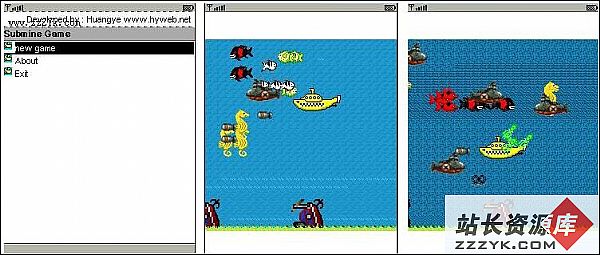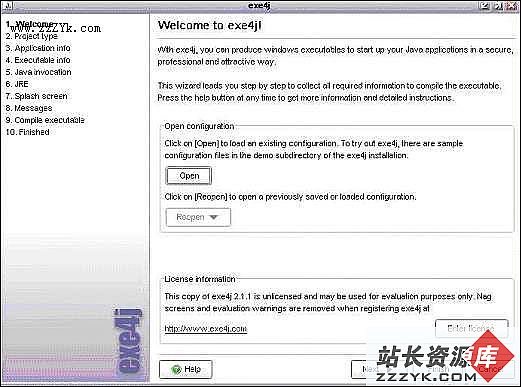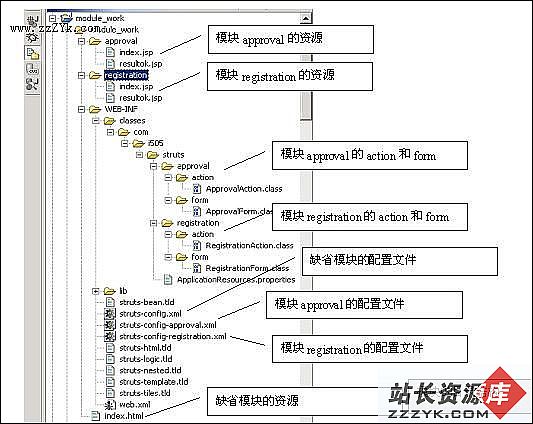当前位置:编程学习 > JSP >>
答案:JSP例子
每个页面都必须使用指定的结构,以符合整个架构。
列表1。login.jsp
<%@ page import = "lbm.jsputil.*" %>
<jsp:useBean id="_loginJSPBean" class="lbm.examples.LoginJSPBean"
scope="session"/>
<jsp:setProperty name="_loginJSPBean" property="*"/>
<% AbstractJSPBean _abstractJSPBean = _loginJSPBean; %>
<%@ include file="includeheader.jsp" %>
<html>
<head><title>Vote Login</title></head>
<body bgcolor="white">
<font size=4>
Please enter your Voter ID and Password
</font>
<font size="3" color="Red">
<jsp:getProperty name="_loginJSPBean" property="errorMsg"/>
</font>
<font size=3>
<form method=post>
Voter ID <input type=text name=voterId value=<jsp:getProperty
name="_loginJSPBean" property="voterId"/>>
Password <input type=password name=password value=<jsp:getProperty
name="_loginJSPBean" property="password"/>>
<input type=submit value="Login">
</form>
</font>
</body>
</html>
<%@ include file="includefooter.jsp" %>
该JSP页面的架构如下:由几个JSP语句开始。接着的HTML代码将没有多少JSP指令、语句和脚本等。除了几个必要的指令,它们负责由bean中得到动态的内容。最后,页面使用了一个JSP include指令。
我们讨论其中一些重要的JSP语句:
<jsp:useBean id="_loginJSPBean" class="lbm.examples.LoginJSPBean" scope="session"/>
<jsp:setProperty name="_loginJSPBean" property="*"/>
以上的代码在JSP和相应的bean间建立了一个连接。第二个语句显式传送全部的form字段(存储为HTTP request参数)到bean中匹配的属性中。代码中使用了bean的setter方法。
<% AbstractJSPBean _abstractJSPBean = _loginJSPBean; %>
<%@ include file="includeheader.jsp" %>
第一个语句让includeheader.jsp可执行共有的处理。第二个语句将includeheader.jsp静态包含进来。要注意到loginJSPBean和_abstractJSPBean现在指向同样的对象,只是带有不同的接口。
列表2:includeheader.jsp
<%-- Set the SharedSessionBean --%>
<jsp:useBean id="_sharedSessionBean" class="lbm.jsputil.SharedSessionBean" scope="session"/>
<% _abstractJSPBean.setSharedSessionBean(_sharedSessionBean); %>
<%-- Set implicit Servlet objects --%>
<% _abstractJSPBean.setRequest(request); %>
<% _abstractJSPBean.setResponse(response); %>
<% _abstractJSPBean.setServlet(this); %>
<%-- Perform the processing associated with the JSP --%>
<% _abstractJSPBean.process(); %>
<%-- If getSkipPageOutput equals false, do not output the JSP page --%>
<% if (! _abstractJSPBean.getSkipPageOutput()) { %>
includeheader.jsp是模板的核心元素之一。所有的JSP页面都使用这个共有的元素。
列表2的前两个语句令不同页面但在同一HTTP session中的JSP bean之间互相进行通信。基本上,每个JSP将有两个与它关联的JavaBean:一个指定的JSP JavaBean(例如,LoginJSPBean)和共有的SharedSessionBean。SharedSessionBean作为一个共有的元素使用,用来连接所有的页面;我将在后面继续讨论它。
includeheader.jsp中接着的三个语句与固有的Servlet对象有关。
<% _abstractJSPBean.setRequest(request); %>
<% _abstractJSPBean.setResponse(response); %>
<% _abstractJSPBean.setServlet(this); %>
JSP规范提供访问Java Servlet规范中的固有对象,例如页面处理中常用到的request、response和servlet对象。因此它们被传送到JSP bean。
<% _abstractJSPBean.process(); %>
最后,通过上面的语句来触发相关JSP页面的处理。你看到我们调用的是抽象JSP bean上的方法,而不是实类LoginJSPBean上的。为什么?我将在以下的部分解释。
运用Template Method设计方法
AbstractJSPBean是Template Method设计的主体。每个实际的JSP JavaBean都必须继承这个类。
列表 3. AbstractJSPBean.java
package lbm.jsputil;
import java.util.*;
import javax.servlet.http.*;
import javax.servlet.*;
public abstract class AbstractJSPBean {
/* constants used for _state */
public static final int NEW = 0;
public static final int FIRSTPASS = 1;
public static final int PROC = 2;
public static final int ERR = -1;
private int _state; // current state
private String _errorMsg; // current message that is being appended during validation
private boolean _skipPageOutput; // should the page output be skipped
private SharedSessionBean _sharedSessionBean; // used for associating the JSP Bean with the HTTP Session
/* standard Servlet objects that need to be setup for each JSP Bean */
protected HttpServletRequest _request;
protected HttpServletResponse _response;
protected Servlet _servlet;
public AbstractJSPBean () {
setState(NEW);
}
protected abstract void beanProcess() throws java.io.IOException;
protected abstract void beanFirstPassProcess() throws java.io.IOException;
protected abstract void beanFooterProcess() throws java.io.IOException;
protected abstract String getJSPCode();
public void process() throws java.io.IOException {
setSkipPageOutput(false); // by default do not skip page output. Specific bean process
// methods can override it.
if (getState() == NEW) {
setState(FIRSTPASS);
beanFirstPassProcess();
} else {
resetErrorMsg();
setState(PROC);
beanProcess();
}
// validation that all common fields have been properly set by the application
// this is actually checking that the code has been written properly
String l_err = "";
if (_sharedSessionBean == null) l_err = l_err + "; SharedSessionBean must be set";
if (_request == null) l_err = l_err + "; Request must be set";
if (_response == null) l_err = l_err + "; Response must be set";
if (_servlet == null) l_err = l_err + "; Servlet must be set";
if ( ! l_err.equals("")) throw new IllegalStateException(l_err);
}
public void footerProcess() throws java.io.IOException {
beanFooterProcess();
}
protected void addErrorMsg (String addErrorMsg) {
if (_errorMsg == null) _errorMsg = addErrorMsg;
else _errorMsg = _errorMsg + " <br>\n" + addErrorMsg;
setState(ERR);
}
protected void resetErrorMsg () {
_errorMsg = null;
}
public String getErrorMsg () {
if (_errorMsg == null) return "";
else return _errorMsg;
}
protected void setState (int newState) {
_state = newState;
}
public int getState () {
return _state;
}
public void setSharedSessionBean (SharedSessionBean newSharedSessionBean) {
if (_sharedSessionBean == null) {
_sharedSessionBean = newSharedSessionBean;
_sharedSessionBean.putJSPBean(getJSPCode(), this);
} else {
if (_sharedSessionBean != newSharedSessionBean) {
throw new IllegalStateException("SharedSessionBean is not set properly. SharedSessionBean must be the same for all PageBeans within the session");
}
}
}
public SharedSessionBean getSharedSessionBean () {
return _sharedSessionBean;
}
public void setSkipPageOutput (boolean newSipPageOutput) {
_skipPageOutput = newSipPageOutput;
}
public boolean getSkipPageOutput () {
return _skipPageOutput;
}
protected void redirect (String redirectURL) throws java.io.IOException {
// skip the page output since we are redirecting
setSkipPageOutput(true);
_response.sendRedirect(redirectURL);
}
public void setRequest (HttpServletRequest newRequest) {
_request = newRequest;
}
public void setResponse (HttpServletRes
- 更多JSP疑问解答:
- jsp新手求指导,不要笑!
- 如何让一个form提取的值传递给多个jsp?
- DW中,新建的html页面能否有jsp或php代码?
- jsp 如何限制表单,实现只能填写特定的数据。
- jsp 和javabean结合的程序有问题
- 从数据库里取出的数据如何传递到另外的jsp页面中
- 你好,ext嵌入那个jsp页面,是不是还需要加上一些插件啊,不太懂,麻烦你了。
- JSP不能处理所有问题吗?还要来一大堆的TLD,TAG,XML。为JSP 非要 Servlet 不可吗?
- 光标离开时全角转半角在jsp中怎么实现
- jsp 页面 打开 pdf 文件 控制大小 和 工具栏 能发份源码么 谢啦
- jsp页面点保存按钮,运行缓慢,弹出对话框提示
- jsp刷新页面如何不闪屏
- jsp 与html 的交互问题?
- jsp小数显示问题 例如 我在oracle 数据库中查询出来的是 0.01 但是在jsp页面上就显示成 .01 没有前面的0
- jsp中日历控件





